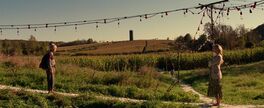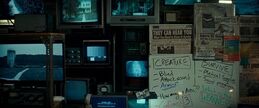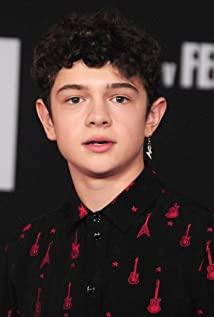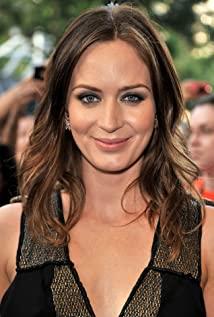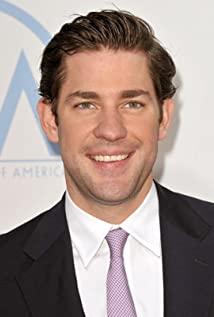The annual horror film "A Quiet Place" has a full "high concept", how to "high concept"? It is different from most modern mainstream movies in that it is a movie that relies mainly on sound and vision, and rarely relies on dialogue. Many of its characteristics have made it a "high concept".
Our audiences rarely have the opportunity to enjoy a real horror thriller in the cinema. This year, the highly praised beauty and fear "A Quiet Place" was released in China. Unlike most mainstream horror films, this is a film that relies on sound to win, uses lens language, and rarely relies on dialogue. It is a "high-concept" horror film.
In the past few years, I have seen many actors switch careers as directors, but John Krasinski’s level of directing this time really impressed me. He also directed three episodes in the US TV series "The Office", and "A Quiet Place" is the third film he directed.
The setting of this film is considered a "high concept", and it uses a quiet way to express tension. The background of the movie is an apocalypse, because of the emergence of a murderous monster with super-sensitive hearing, there is not much mankind left. The slogan of the movie is "Once they hear you, they will start chasing you."
The film ’s straightforward approach to this worldview began on the 89th day when humans were attacked by mysterious creatures. As a few survivors, the protagonist’s family has quickly adapted to this deliberately silent world. At the beginning, a lot of news clues from paper media were used to piece together the background of the story. Paper media replaced radio, television and other audio media, which also conformed to the setting of the story. As for where the monsters came from and why they invaded, there is not much explanation. Just like Hitchcock's movie "The Birds" (1963), it deliberately creates a mysterious atmosphere at the beginning and strengthens the rhythm of the story. If the cause and effect are explained clearly, it will be a lot boring, and the audience can also have their own interpretation.
The design of the monsters is also very interesting. Their eyesight is blind and their hearing sense is keen. Even the slightest sound will attract them, just like the "Blind Man" Zantou City, through sound and echo positioning.
Such a setting is easy to produce a sense of urgency. In addition, monsters always appear suddenly and disappear quickly at the beginning. It is more to use human behavior and fear to indirectly set off the outline of monsters, and always maintain suspense about their appearance. This takes advantage of the fear of human beings in the unknown, and is the same strategy as classic monster films like "Jaws", "Alien" and "The Mist".
The classic monster movies in history are all about people, not monsters. Monsters are often fascinating, and people can touch and support each other. The film uses human characters as the starting point to inject more emotional elements into the story. It explores the complex relationship between parents and children, especially the relationship between father and daughter. One of the most touching aspects of the movie is that in the shadow of fear, the father and daughter have been eager for reconciliation (love is in your heart). Family emotions effectively support the relationship between the characters and demonstrate the glory of humanism.
The sound design of an auditory-oriented movie is very important. When the audience is accustomed to the various explosions in those commercial blockbusters, the high-decibel sound has long engulfed the audience. "A Quiet Place" makes the sound more sensitive, using the details of the sound to create tension and anxiety. Just as Brian de Palma was sensitive to sound in the thriller "Blow Out" (1981), he focused on using sound to reveal suspense.
In the narrative technique of sound strategy, a terrible premise is established. The brilliance of the movie is not to scare the audience, but to make the audience tense and maintain a high degree of tension. The non-voicing setting makes this premise tense and sets the tone for the entire movie. Once this technique is used to attract the audience, the sense of tension will rise. Of course, this also strengthens the level of shock of the "jump scare" several times.
Although it uses sound to reveal the story, the film is more of a "pseudo-silent film" approach with no words and only environmental sounds. It is reported that the two screenwriters of the film, Brian Woods and Scott Baker, wanted to make a silent horror film when they were in college, and "A Quiet Place" first wanted to make a film with only one or two lines of dialogue. . Baker said in an interview with the media that they have seen many silent films, including comedies by Chaplin and Keaton. Their favorite is Jacques Tati's comedy-comedy with not much dialogue with sound.
Therefore, "A Quiet Place" has an almost silent filming method, telling stories with visual language-the movement, space and position of the camera are all skillful. For example, in the first confession that a mother was pregnant, there was no dialogue. Only a mother was wearing maternity clothes, and the close-up of her belly standing on the chair was clear at a glance.
Hollywood has long filmed non-traditional silent films, such as "The Theif" (The Theif, 1952). There is no dialogue in the whole film, only the soundtrack and ambient sound. It relies on scene scheduling and actor performance to show the dramatic tension. Even when the phone rang, the protagonist was afraid to answer because of the plot.
The family in "A Quiet Place" often uses American Sign Language to communicate. This is also because the daughter's role is originally a hearing impaired person, so the family can communicate skillfully. In previous film works, we have also seen the use of sign language. More recently, there is Sally Hawkins’ interpretation in The Shape of Water (The Shape of Water, 2017). Mary Matlyn, who once won the Oscars with "Children of a Lesser God" (Children of a Lesser God, 1986) is also a hearing impaired, and many of her films are performed in sign language.
"A Quiet Place" also has real hearing-impaired actors-the daughter's actor Millicent Symonds was deaf and deaf due to an overdose when she was a baby. This is her second movie. Her first movie was last year. The semi-silent film "Surprise in Silence" directed by Todd Hines.
The film is also good at using props to construct suspense, such as batteries taken by children, nails on stairs, and creaking doors hanging in the air. This is a trick that Hitchcock likes very much. His time bomb in Sabotage (1936) is the most famous example. The audience knows that the bomb will explode in advance, but they don’t know when it will explode. The audience is better than the character. Knowing a lot will worry about the role. Nails more than once made the audience worry about the character.
There are many small details hidden in the film. At the beginning of the film, most of the store shelves were empty except for a shelf of potato chips, because they were too loud to eat. This design is simply too hard, and it doesn't even consider whether the audience will notice it.
The film also pays special attention to the change of perspective . The audience will involuntarily follow the sound design to enter the perspective of a certain character, which is caused by a strong sense of substitution. In one scene, a mother handed the earphones in her ears to her father. The music in the earphones gradually increased from weak to strong, and finally the audience entered the perspective of father. There are also several uses of cochlear implants, and the audience will enter the perspective of the daughter. It's as if we are wearing headphones and cochlear implants.
The choice of scene is also very important. My favorite scene is that two children fall into the corn barn. This is a closed environment, which is full of dangers. The child will continue to sink and can only balance through a falling door. Last year's "Jigsaw 8: Jigsaw" (Jigsaw, 2017) also used similar scenes to create danger. Obviously, "A Quiet Place" will even use the limitations of the scene to create suspense.
Last second, the two children were still separated because of whether their father would come and who would save them. Now, they are cooperating with each other, not to make any noise, but also to avoid falling. Another creaking door that didn't fall was another "time bomb", and the suspense and tension were all reflected in this scene. This scene is like the "Jurassic Park" (Jurassic Park, 1993) siblings avoiding tyrannosaurus in the kitchen and almost bumping into the banging kitchen utensils.
Some viewers will question the plot of the mother's pregnancy, thinking that it is unscientific for the mother to choose to get pregnant and get pregnant at this time. After all, the childbirth is bound to cry, and the child is bound to cry. This is a scene that requires "voice". Why did she give birth to a child in this environment?
As a handful of survivors, this family has the mission of human reproduction. Of course, this also has a lot to do with the fate of the youngest child at the beginning. Childbirth is a symbol of the belief that this family lives. The film emphasizes the concept of "family" throughout the film, and children represent the future.
Finally, what I want to talk about is the "interactive effect" of "A Quiet Place" . Its silence and low volume effectively engage the audience outside the theater to form a psychological interaction. The audience becomes a passive participant, acting as a part of avoiding monsters together with the characters. This is the innovation of this film, and some viewers even cover their mouths.
Take a look at the following viral marketing video about movie etiquette to get a glimpse of this interactive experience:
Director William Caso brought cinema marketing and interaction into the plot as early as the late 1950s and early 1960s. In "The Tingler" (1960) directed by him, the electric buzzer device on the seat sweeps the legs of the audience, and it is matched with the plot of the big bug crawling into the theater and climbing on the thighs of the audience. The audience in the movie must yell before the bug will run away. The audience outside the movie will also resonate psychologically and scream.
This was a great interactive idea at the time, it was not just 4D. Because the theater in the play and the big bugs on the screen are all a kind of "movie and audience" interaction. At that time, the audience was screaming in the theater. Now, "A Quiet Place" keeps the audience quiet. It can be seen that horror films are constantly evolving and changing.
Several interactive films of William Caso emphasize the psychological aspect. In "The Hunter" (Mr. Sardonicus, 1961), the director personally appeared to break the fourth wall, allowing the audience to choose the fate of the characters in the film and let the audience Holding the voting card in your hand, you will feel that you not only have the right to vote. He even pretended to speak to a lady in the audience.
When the film is approaching the climax, it also warns the audience that the nervous moment is coming, so be more vigilant.
Mr. Hou Baolin had a dialogue with the audience in his so-called movie "A Dream in the Garden" (1956), emphasizing that this is a "movie cross talk", which also uses the movie screen as a stage, which is also a kind of "between the audience and the movie". Psychological" interaction.
His other movie "13 Ghosts" (13 Ghosts, 1960) also prepared red and blue glasses for the audience. In accordance with the protagonist wearing the "ghost" glasses in the film, he can choose whether to see the ghost (filtered by lenses).
These gimmicks led to the development of interaction-4D movies with "olfactory experience" "Scent of Mystery" (Scent of Mystery, 1960), "Pineapple Fat" (Polyester, 1981) and "Very Little Agent: Time Thief" ( Spy Kids: All the Time in the World, 2011). Of course, these are the sensory experiences brought by real smells, some of them are emitted from the ventilation ducts under the seats, and some are through olfactory cards.
There are also many psychological interactive movies-"The Hypnotic Eye" (1960) instills hypnotic awareness in the audience; Tom Tykway's "Perfume" (Perfume: The Story of a Murderer, 2006) can be regarded as psychological A sense of smell on a level; Lou Ye's "Tuina" (2014) also consciously brings viewers closer to the lives and emotions of the blind, and the virtual spot focus in photography also creates a unique perspective for the blind.
Let me say that "A Quiet Place" is an auditory interactive experience. The relative quietness on the screen magnifies the audience's responsibility. Even chewing popcorn will feel louder. The audience is quieter than ever. This is the interactive movie. The charm lies. I don’t know if this film can make our viewing etiquette a little bit better?
View more about A Quiet Place reviews





